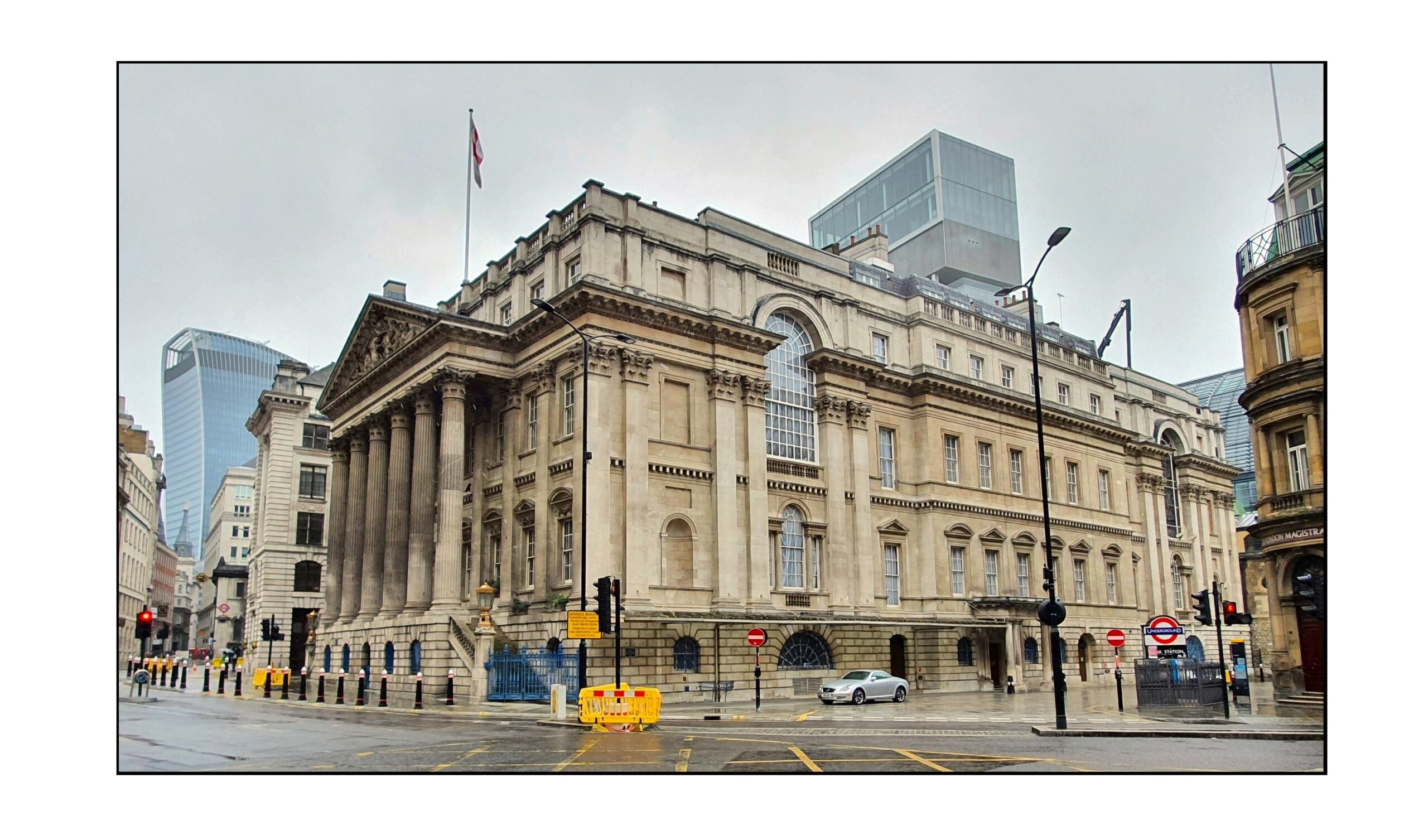
Everything you need to know – and a few trivia facts you don’t – about an iconic building at the heart of the Square Mile
The official home of the Lord Mayor of London, used for some very important official functions and charity events. It sits at arguably the most memorable and historic road junction in the City, where you can also see the Bank of England and the Royal Exchange. Cornhill, Poultry, Lombard Street and Threadneedle Street converge here.
Its official address is ‘Mansion House Street’, a strip of tarmac just 60 metres long between Threadneedle Street and Poultry. Remarkably, this short street manages to cross three postcodes:
The Stocks Market – a central retail market for fish and meat – was previously on the site. Its demolition seriously incommoded the working classes then living in the City, as they had to walk far further to purchase fresh produce.
Building began in 1739 and was completed by 1753.
For the most part, it was financed by nonconformists. Not through any municipally-inclined benevolence, but because the City of London authorities hatched a brilliant, if unethical, ‘catch-22′ plan to exploit the dissenters’ inability to serve as Sheriff. The candidate had to have ‘taken the sacrament according to the Anglican rite’ within the past year (known as ‘occasional conformity’) – the one thing many dissenters could not in good conscience do. They could not run if asked, and could not serve if elected.
The Court of Aldermen of the City passed a bye-law imposing a fine on any one refusing be a candidate for Sheriff, and on any person who, being elected sheriff, refused to serve. They then proposed and elected dissenter after dissenter. Eventually the House of Lords stopped the abuse, but only after enough money had accrued from fines to build the Mansion House.
The position of Sheriff (from ‘Shire Reeve’, the representative of the monarch in a county) is much older even than that of Lord Mayor. The City has two, both serving for a year, elected ‘by acclamation’, and to become Lord Mayor you must previously have been a Sheriff. For historical reasons – their role formerly revolved around justice – they live and work at the Old Bailey. No need for extra staff bedrooms at the Mansion House, then.
No. Richard Whittington died in 1423, more than 300 years before work on the Mansion House began.
No. He’s the Mayor of London (that is, the county of London), the third person to hold that office since it was created in 2000. He doesn’t have an official residence and works at City Hall, the curious egg-shaped building across the Thames from the Tower of London. The Mansion House is the official residence of the Lord Mayor of London (that is, the City of London, or the ‘Square Mile’), an office in existence since 1189. The 692nd and current Lord Mayor, and hence resident of the Mansion House (as at July 2020) is William Russell.
Until shortly after the Great Fire, he lived in his own home. He would host functions there, in the hall of the livery company to which he belonged, or the Guildhall.
After the Great Fire, a building was constructed in New Court, now known as Groveland Court, just south of Cheapside, as an official residence. William III and Mary II donated some fine wrought iron gates after dining there – perhaps they felt a tad unsafe while eating – and it is this building that was replaced by the much grander Mansion House.
The redundant building became Williamson’s Hotel & Tavern. It has remained a tavern under that name to this day, although it was rebuilt in the 1930s, and the interior reflects that period. It is in such an obscure, if central, location that your only hope of finding it is to get lost south of St Mary-le-Bow church.
The Mansion House isn’t the work of a great name in architecture. George Dance the Elder (1695-1768), Clerk of the City Works, was responsible. He designed some churches and a synagogue in the City, and was responsible for the clearance of houses on London Bridge, but got the gig for the Mansion House mainly because of his official position rather than the quality of his design. The result is an awkward exterior that copes badly with the restricted site and was criticised by twentieth century critic John Summerson as ‘cramped and overdressed’. However, the interior is rather more successful (Colvin 1995). Key spaces are:
Dance’s fifth son (George Dance the Younger, 1741-1825) assumed his father’s position a few days before Pa’s death. Junior was a bit of a renaissance man, and a rather more talented and enlightened architect than his father; his main pupil was Sir John Soane, which says a lot.
The changes Junior, and his successors, made to the Mansion House were certainly beneficial – most notably, the demolition of two long wooden pavilions on the roof built by Senior, nicknamed the Mayor’s Nest (a deliberately excruciating pun) and Noah’s Ark. Their removal much improved the exterior look of the building. Junior took down the Mayor’s Nest in 1795, and Noah’s Ark followed it into oblivion in 1842.
The Lord Mayor is chief magistrate for the City of London. Hence there also used to be a courtroom, officially called the Justice Room. There were police cells in the basement – several for men, one for the ladies. Only in 1999 did the court move to 1, Queen Victoria Street – a building on the opposite side of Walbrook that had been built in 1873 as offices.
Unsurprisingly, the Mansion House is listed grade I.
Odd that you should ask that – yes, there is. The Harold Samuel Collection was donated to the Mansion House collection in Lord Samuel’s will, and the Mansion House received them almost immediately upon his death in 1987. There is no requirement attached to the bequest to allow regular public access, although it has gone on tour to North America during Mansion House renovations, and twice been shown at the Barbican Art Gallery.
Covid-19 permitting, there are occasional tours organised by the City of London Corporation, which no doubt also take in some of the art collection, but you need to book places on these tours in advance. Check out the website here. It is not usually open to the public otherwise.
Ah, so you noticed that.
Blame this anomaly on the Metropolitan District Railway (MDR), the private company that built and opened it in 1876. The Central Line Bank station, with one entrance barely 15 metres from the Mansion House (in the right foreground of the featured photograph above), opened much later – in 1900. The MDR probably thought that naming their station after such an important and impressive building, at a time when there were no other stations in the area, was good for business. It should have been renamed in 1900; ‘Garlick Hill’ or ‘St Mary Aldermary’ would have been appropriate and almost poetic choices. Sadly, it still bears its original name and has confused generations of Londoners and visitors alike.
Gallery:
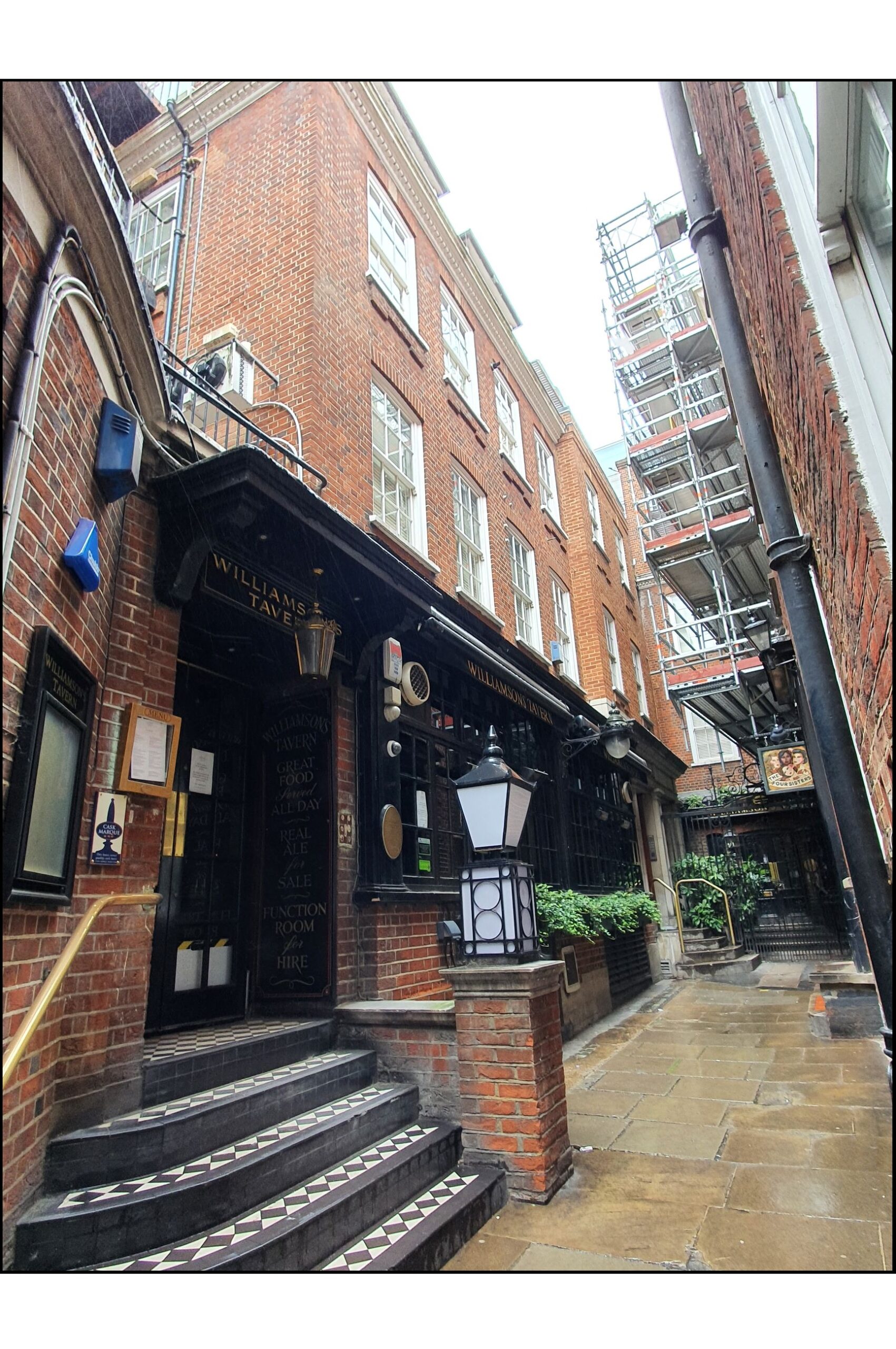
← Williamson’s Tavern, the previous home of the Lord Mayor, hemmed in by other buildings in Groveland Court. Signs on the building suggest that it holds the oldest excise licence in London.
The William and Mary gates are at the far end of the alleyway
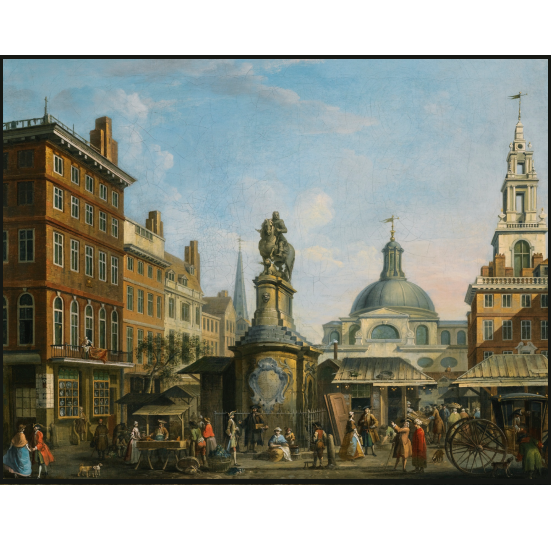
→ Countless generations of Londoners bought their fish and meat from the Stocks Market – where the Mansion House now stands – including Samuel Pepys. He recorded purchasing 2 lobsters there for supper, and then forgetting about them.
This painting, by Joseph Nickolls (1713–1755), also shows the dome and tower of the church of St Stephen Walbrook – a Wren masterpiece that stands to this day.
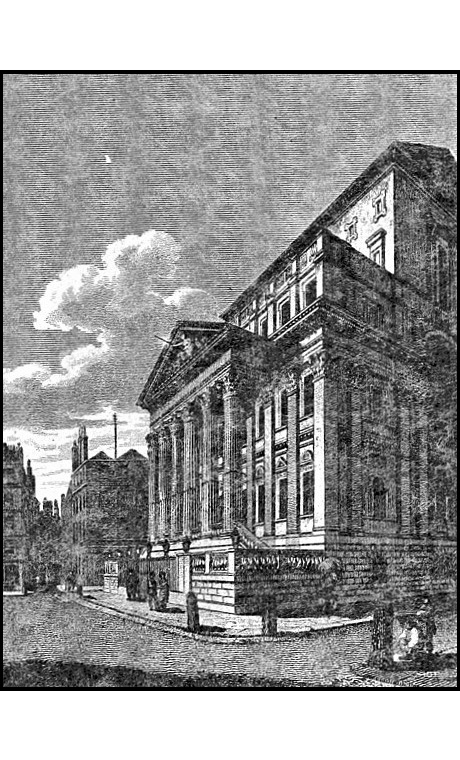
← An 1820 image of the front, showing the appalling top-heavy visual impact of Noah’s Ark, clumsily positioned on the roof over the ballroom. The Mayor’s Nest, similar in size but towards the back of the building over the Egyptian Hall, had been removed by this date.
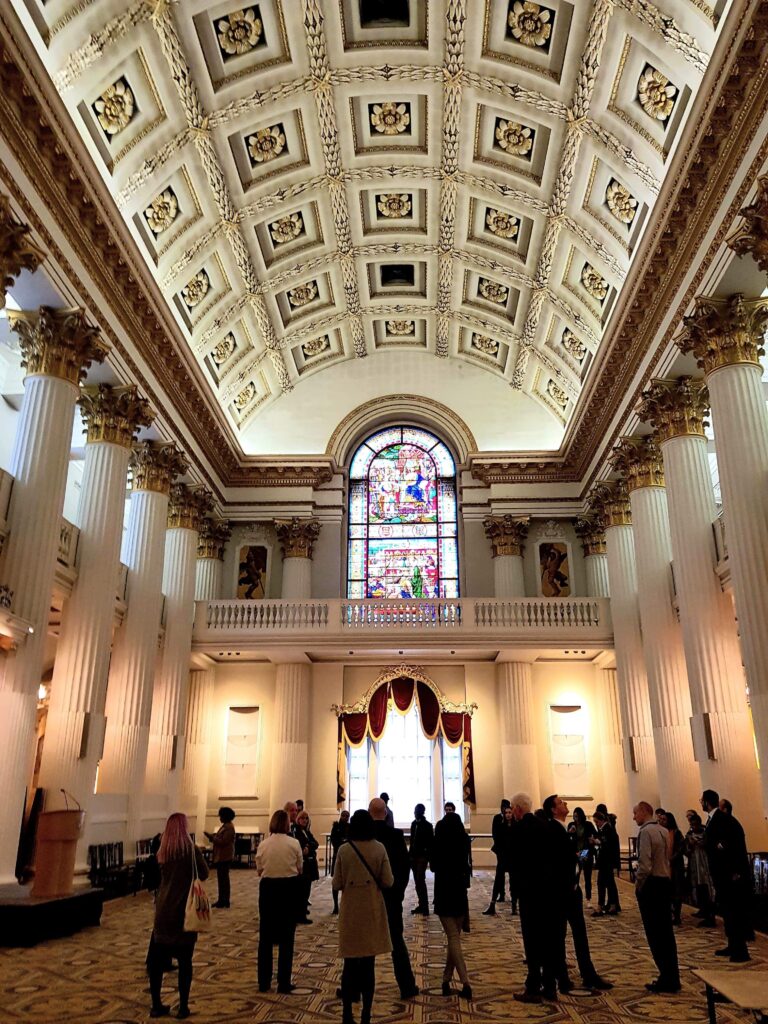
→ The Egyptian Hall, with the ceiling created when the ‘Mayor’s Nest’ was demolished.
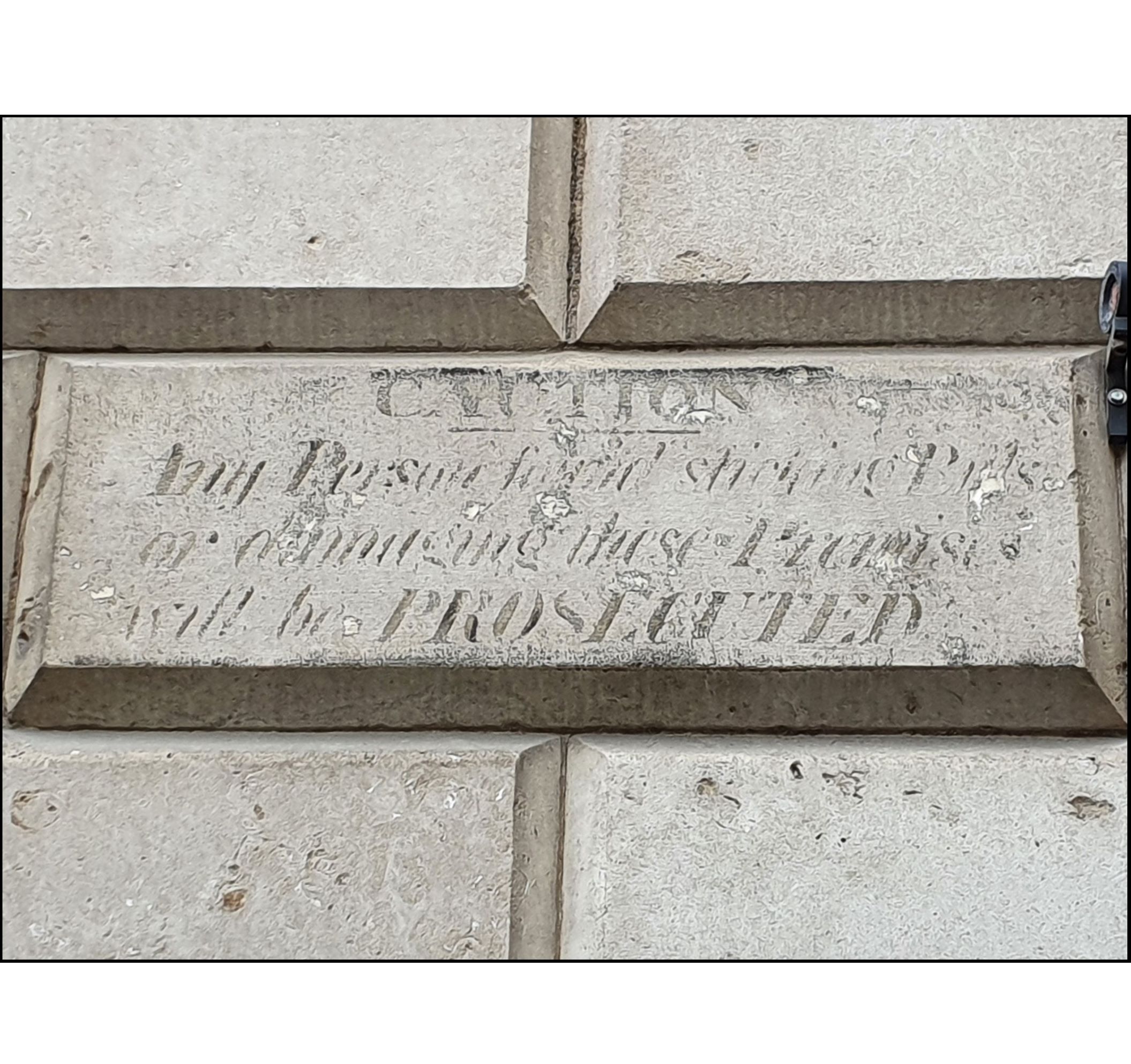
← A stern – if ancient – warning on the western wall of the Mansion House: “CAUTION Any person sticking bills or damaging these premises will be PROSECUTED” Directly opposite the sign is the City of London Magistrates Court, so I won’t be risking it.
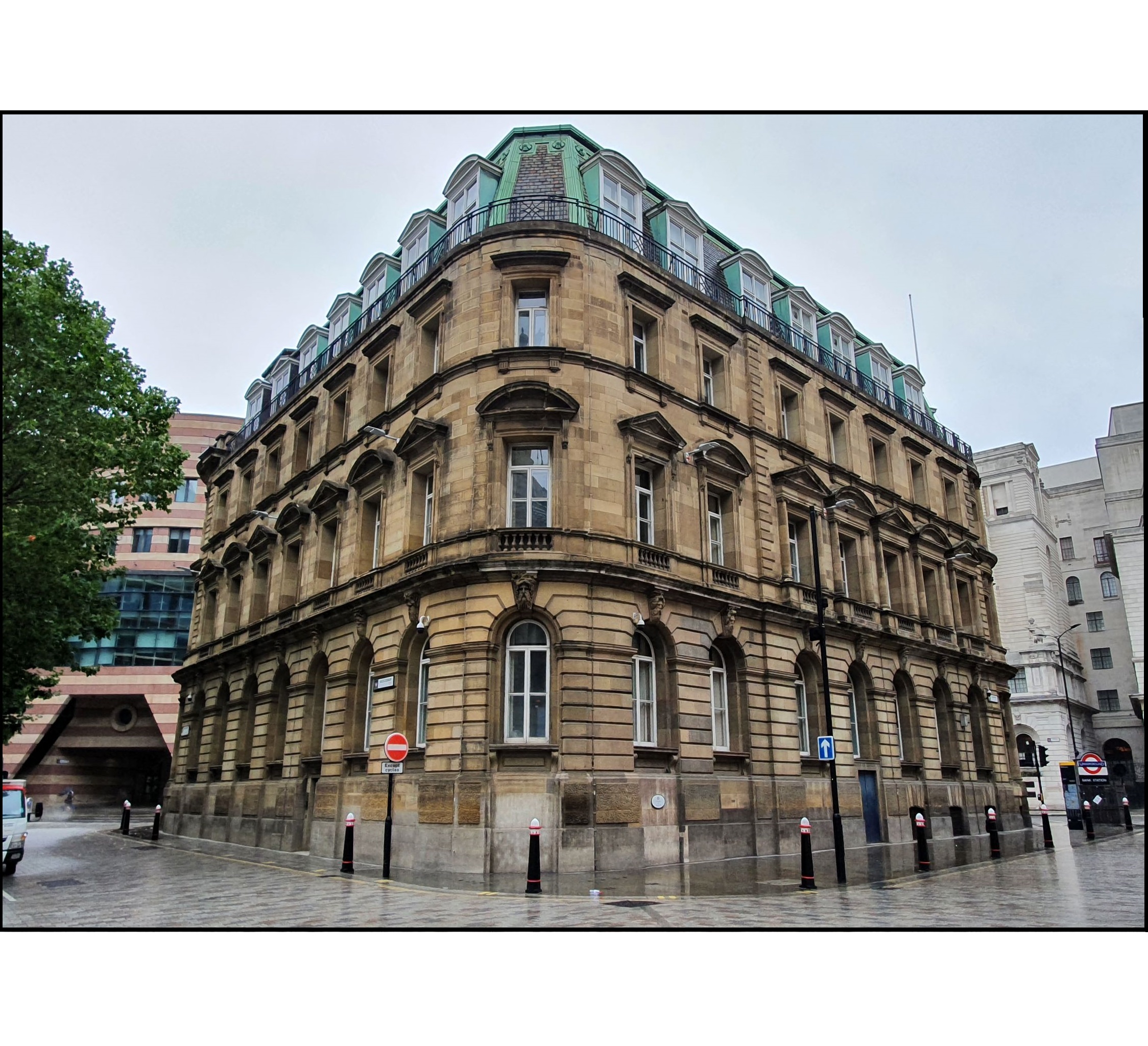
→ The Magistrates Court at 1, Queen Victoria Street. Bizarrely, this building is administered not by the City of London, but by the City of Westminster. It is listed grade II
Nearest Stations:
Selected Bibliography:
Credits: